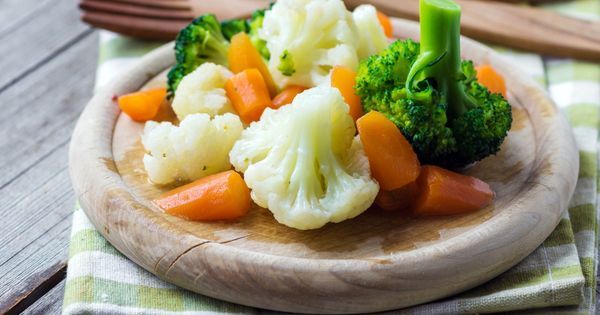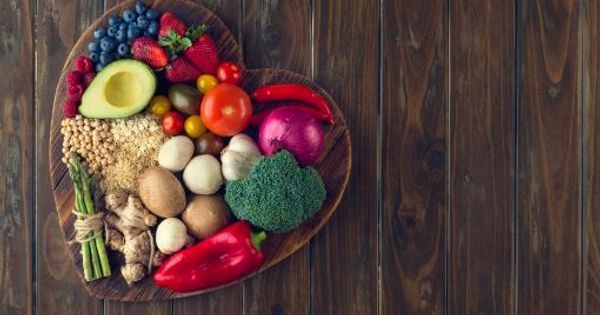The Slim-data method is one of those diets that aim to keep the body and mind in good health. It is based on the fact that it is thanks to a diet mainly composed of products with a low glycemic index that we find our right weight and thus keep in shape.
What is the Slim-data diet?
Developed by Dr Yann Rougier and a few American colleagues, revealed to the general public with the publication of the book Do you want to lose weight with me? The SLIM-data method in 2007, the Slim-data method is not defined as a diet but as a hygiene and food rebalancing program1. There is no question of reducing your calorie intake like in most weight loss diets. Indeed, the specialist has observed that depending on the food ingested by an organism, with equal calories the result on the body differs. Also, nothing lasting takes hold in the body if it is not anchored in the metabolic balance, which is governed by insulin, the hormone that orchestrates the distribution of sugars in the body. Indeed, no deprivation diet is sustainable.
Slim-data, whose name means Slimness with the Lowest Index of Metabolism (thinness through the use of low metabolic indexes) therefore assumes that we are not what we eat but what we assimilate1. It is also based on the combination of three Indexes which define the digestive impact of a food: the Insulin Index, the Enzymatic Index and the Caloric Index. Taken together, they give a reliable indication of the process of managing each food resource in metabolism.
Very simple, the Slim-data method has been used for many years in hospitals and by nutritionists.
How does the Slim-data diet work?
The Slim-data method classifies each food according to its dynamic metabolic data??? A cooked carrot will not have the same value as a raw carrot5. All the foods have been arranged in a table by category, each represented by a color so that the diet is easy to set up. The method consists of three distinct phases during which the different categories are combined according to the glycemic indexes of foods2:
Phase 1
Duration: 4 weeks.
This is the reprogramming phase of the slimming organs. For each meal you can choose between the following combinations:
Phase 2 .
Duration: 4 weeks.
This is the reconnection phase at the center of satiety. At each meal, we must consume:
Twice a week (non-consecutive), it is possible to add 1 red food to this combination.
Phase 3
Duration: up to the right weight and then, ideally, for life.
This is the so-called "awakening of slimming memory" phase where all combinations of a maximum of 3 foods are authorized except the following:
In general, it is recommended to consume foods from the green category with each meal, and to always combine a red food with a green food.
Note: Foods with a very high glycemic index in the red category are only allowed once or twice a month at most, regardless of the phase.
What can I eat?
The Slim-data diet categorizes foods into 3 color zones: green, orange and red. These zones allow you to choose how to combine them with each other since it is the combination of the different ingredients that creates a good or a bad Slim-data1.
Here is the summary table of method:
| ZONED | GREEN | ORANGE | RED |
| Consumption | At will | Moderately - Combine | Avoid alone OR combine with Green Zone foods |
| Low glycemic index | Green vegetables (zucchini, leeks, cucumber, various salads), tomatoes, celery, fennel, shellfish, white fish, hazelnuts, walnuts, goat's milk, sheep's milk, sheep's milk yogurt, cereal bran, water | Barley, pears, whole grains, wholemeal pasta, green banana, lactose, peas, wholemeal bread, chickpeas, meatless sauerkraut, cooked cheeses, apple, seasoned salads, mango, papaya | Oatmeal, corn, ripe banana, carbonara pasta, pizza, cashews, pecans, muesli, tarama, apple juice, mango, papaya, custard, oils, butter, bolognese pasta, applesauce, potato sweet |
| Average glycemic index | Tomato soup, green vegetable soup (without potatoes), skimmed milk, white meat, chicken, rabbit, plain yogurt, various raw vegetables, plain egg, boiled egg, protein sachet | Grapes, pasta, spelled flakes, rye, bulgur, couscous, wheat, plums, beetroot, peaches, classic sandwich (except cold meats), nuts (pecans, cashews), lentils, bolognese pasta | Cooked carrots, pâtés, apricots, crisps, scrambled eggs, energy bars, honey, white rice, pure fruit juice, cookies, chocolate, boiled potatoes, mash, cold meats, sausages, cassoulet, jams, margarines |
| High glycemic index | Green beans, rye (grains), red beans, orange, cherries, guinea fowl, oily fish, red meat, dairy products, fruit yogurts, grapefruit, cream cheese, raw carrots, kiwis, ostrich, radish, soy tofu | All-bran, flours (wheat, wheat, buckwheat), brown rice, raisins, orange juice, breaded fish, ham, fried eggs, fructose, yam, white beans, peas (dry), pistachios, various pizzas ( fine paste) | Sucrose (sugar, syrup), red wine, white bread, aperitif cookies, sandwich bread, light or sweet sodas, rusks, crackers, breadsticks, maple syrup, millet, vegetable purees, rillettes, peanuts, gingerbread , confectionery, chocolate bars |
| Very high glycemic index | - | - | Alcohols, puffed rice, corn flakes, maltose, store-bought baguette, precooked or minute white rice, glucose (sugar and syrup), all dry snacks (salty or sweet) |
| Storage Force | Low | Average | Strong |
Recommended foods
All those in the green zone that can be eaten alone without problem.
Prohibited foods
All extremely processed products are toxic to the body and promote overweight, such as smoked salmon-flavored almonds, barbecue sauce or sodas, for example1. However, two deviations per month are allowed during phases 2 and 3 of the plan.
Foods to eat in moderation
All foods from the orange and red zones (especially those with a very high glycemic index) due to their various storage forces in the body.
Note: Be careful with cooking. Cooking food means stirring its molecules??? By proceeding slowly, we keep the structure of the product. Conversely, if it is done quickly, it is broken down. As part of the Slim-data method, it is recommended to favor cooking with steam, in a ventilated oven or on a vertical barbecue (to avoid charred fat) but also to avoid microwave ovens for copper or defrost. food, only for reheating, but never at more than 500 watts1.
Is the Slim-data diet easy to follow?
Cost of the Slim-data regime
Effectiveness of monitoring linked to the Slim-data diet
What type of physical exercise should accompany the Slim-data diet?
Is this diet dangerous for health?
Developed by Dr. Yann Rougier, founding member of IN2A (Institute of Neuronutrition and Applied Neurosciences), the Slim-data method respects the metabolism and the needs of the human body. There is therefore no risk in following this diet.
Is this diet compatible with special diets?
Vegetarian diet
The Slim-data diet can be adapted to a vegetarian diet, selecting foods like tofu, eggs or fish in place of meats.
Vegan diet (vegan)
The Slim-data diet cannot be adapted to a vegan diet because this food hygiene is described as unhealthy by the author of the method, unless you are "in a great spiritual process which allows to remove all stress , and to respect the rhythm of nature "1.
Gluten free diet
The Slim-data diet is compatible with a gluten-free diet as long as you choose starchy foods that do not contain it, such as Sarrazin pasta, rice flour bread, etc.
Low salt diet
The Slim-data diet is compatible with a low-salt diet since it avoids any consumption of ultra-processed products carrying large amounts of salt.
Kosher diet
The Slim-data diet is compatible with a kosher diet as long as you choose kosher meat and the types of fish categorized as kosher.
Halal diet
The Slim-data diet is compatible with a halal diet provided you choose halal meat.
Are the contributions of this diet sufficient?
No risk is associated with the Slim-data health slimming diet program because it offers a varied diet. It is indeed rich in vegetables and fruits which provide fiber, vitamins and nutrients essential for the functioning of the human body ... But also in proteins, potassium and magnesium.
What type of meal does this diet offer?
Example of a typical day
Breakfast
At lunch .
Snack (morning or afternoon snack)
At dinner
Note: It is advisable to take a few anti-stress breaths for 2 to 3 minutes before each meal (such as SB2), and finish it with a glass of water or an infusion to "basify" the body1. It is recommended to finish your evening meal before 9 p.m. so that digestion does not interfere with the chronobiological peak of growth hormone, which can promote fat storage. It is also recommended to eat slowly, for 30 to 35 minutes, in order to activate the center of satiety and not to eat more than necessary.
















